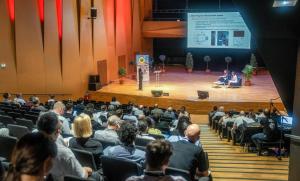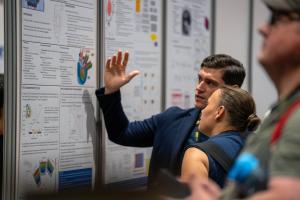Superconducting magnets as a catalyst
Many passers-by paused for a moment and picked up their cell phones to capture the scene. It was indeed rare to see dancers on the square outside of the Pavillon Noir—home to the Ballet Preljocaj in Aix-en-Provence. The dancers had abandoned their natural habitat because the iconic black cube had become, for one week, centre stage for the world's largest gathering of specialist in magnet technologies.
A status report on ITER, delivered by ITER Deputy Director-General for Science and Technology Yutaka Kamada, marked the opening of the 28th Conference; five days later it was closed with a special forum on "alternative paths to commercial fusion." Gianfranco Federici, head of the Fusion Technology Department at EUROfusion, read down the "to do" list for fusion to succeed ("every machine after ITER must produce tritium") and challenged the "smaller, faster, cheaper" approach of some of the private fusion startups. Federici also stressed the importance of ITER and its key goal: to produce a burning plasma ("without that we can go home!") Co-panelist Dennis Whyte, director of the MIT Plasma Science & Fusion Center (PSFC) insisted that one of the key drivers for commercial fusion deployment would be the price per kilowatt-hour. PSFC is currently collaborating with the private start-up Commonwealth Fusion Systems on a compact high-field tokamak called SPARC.
In an extensive industrial exhibition, 43 companies from around the world presented applications in superconductivity as wells as new superconductor concepts, with much of the debate focused on the performance and commercial readiness of high-temperature superconductors such as rare-earth barium copper oxide (ReBCO). Once more, fusion could be the catalyst for advances in this field, an exhibitor said.
And with the conference venue located only 30 kilometres south of the ITER site, more than 500 participants took the chance to see the ITER construction site and the project's impressive magnets with their own eyes.
If you missed it last week, see a gallery of photos here.



